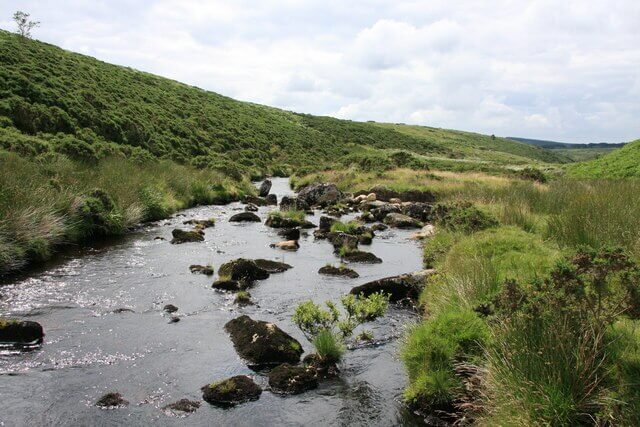
Sewage is being discharged into rivers inside national parks at twice the rate seen outside protected areas, new analysis has revealed.
Campaigners called the findings “outrageous,” arguing that rivers and lakes in England and Wales’s national parks should be the country’s cleanest and most protected.
Data shows there are 464 water company overflow sites within national parks. In 2024, each site spilled sewage for an average of 549 hours—equivalent to eight hours a day over two months. In total, parks endured 254,808 hours of sewage outflows last year.
The report, published by the Campaign for National Parks (CNP) and the Rivers Trust, found that more than half of rivers within the parks failed to meet the “good ecological status” required by law. Agricultural slurry, fertiliser runoff and pesticides also contributed to their decline.
The worst-affected areas were Dartmoor, the South Downs, the Broads and Eryri (Snowdonia).
National parks contain internationally important wetlands and chalk streams and are home to species such as salmon, beavers, water voles, bitterns and eels. They also attract millions of visitors and play a vital role in reducing flood risks downstream.
Campaigners urged the government to deliver on promises made in January to tighten sewage regulations, and to upgrade all sewage treatment plants in national parks to the same standard as those in more densely populated areas.
“National park rivers are being poisoned, drained and neglected – if we can’t protect these, we can’t claim to be serious about ending the UK’s water crisis,” said Dr Rose O’Neill, the chief executive of the CNP. “This outrageous level of sewage reflects ageing and poorly maintained infrastructure that is ill-designed and undersized to cope with actual resident and visitor populations.”
She added: “Without change, local groups working to protect national park waterways are often swimming against the current. Water regulators and companies have ignored national parks for far too long.”
David Johnson, a technical director at the Rivers Trust, said: “This data presents a tragic tale of underinvestment and mismanagement of the rivers that flow across our most iconic landscapes. Serious action is needed to break the cycle of pollution and destruction.”
The report highlighted that combined sewage overflows (CSOs)—meant to operate only during heavy rainfall—are a major source of pollution.
In January, the flooding minister, Emma Hardy, told parliament: “We will strengthen through new regulation the role that public bodies, including water companies, must play in delivering better outcomes for nature, water, climate and access to nature in these special places.” However, the new regulations have yet to be put in place.
A spokesperson for the Department for Environment, Food and Rural Affairs, said: “The government is taking action to clean up England’s rivers, lakes and seas, especially in our iconic national parks and landscapes. [Across the country] we’re rebuilding sewage pipes to slash pollution levels in half with over £104bn of private investment.”
Dartmoor had the longest total duration of discharges at 49,076 hours in 2024, followed by Eryri with 47,187 hours. Some rivers were particularly hard-hit: the Lymington in the New Forest endured 2,800 hours of sewage flows.
On average, Dartmoor’s CSOs spilled three times more than those outside national parks. In the South Downs and the Broads the rate was 2.9 times higher, in the New Forest 2.6, and in Eryri 2.4. Only Northumberland and the North York Moors had better-than-average results.
One reason, the report noted, is that sewage works serving fewer than 2,000 people are not legally required to use “secondary treatment,” which removes organic waste, leaving many sites reliant on basic systems.
Overall, 42% of water bodies in national parks were rated as having good ecological status—better than the 12% figure for rivers outside parks, but still well short of legal requirements.
But with 57% of rivers in national parks failing to meet the minimum, legally required state, “there is still a hell of a long way to go”, said Gareth Ludkin at the CNP. “The [sewage infrastructure] is no longer adequate, and probably never has been, for large influxes of people visiting the parks – it’s just out of date and defunct.”
Hazel Tranchant, from South West Water, said: “Dartmoor experienced high storm overflow hours in 2024, and we recognise we need to do more to reduce spills.” She added that 2023-24 was the wettest hydrological year on record, “which made this a challenge”.
Farming was cited as a cause of 76% of water pollution in the Broads and sewage as a factor in 80% of failing rivers in the South Downs. Toxic “chemical cocktails” including pharmaceuticals and pet flea treatments were also identified in some waters.
But she said: “We need to go further and faster. Waterways are the cornerstone of our habitats. Yet, as the report illustrates, our efforts are hampered by poor infrastructure, lack of investment and weak regulation.”
Vanessa Rowlands, chair of National Parks England, praised local authorities, landowners and communities for improving river conditions inside parks, pointing out that a quarter of Dartmoor’s CSOs already meet legal limits of fewer than 10 spills a year. She said another quarter would be upgraded by 2035, with the rest by 2040.
A spokesperson for Southern Water, which covers the South Downs and New Forest national parks, said: “We share customers’ desire to protect and enhance our precious national parks. Over the next five years, we’re targeting the four most active New Forest outfalls and 13 priority overflows in the South Downs, to bring all spills below the government targets. We’re also upgrading wastewater treatment works across both areas.
“Groundwater forcing its way into sewers causes most storm overflows in these areas, but through innovative relining and replacements we’re tackling this problem.”
A spokesperson for United Utilities, which covers the Lake District national park, said: “We are wholeheartedly committed to helping improve water quality across our region and in our national parks. That’s why we’re delivering the largest ever environmental investment programme in the north-west.”
The CNP is demanding that upcoming water legislation include legally binding targets to clean up rivers, lakes and streams in national parks by 2035. This would require fixing all CSOs, ensuring every sewage works provides secondary treatment, banning toxic chemicals, and raising all water bodies to at least “good” ecological status. It is also calling for tougher regulation and greater support for farmers to improve slurry and muck management.
A spokesperson for Welsh Water, which covers the Eryri national park, said Wales has high levels of rainfall: “Storm overflows are essential to ensure networks do not become overwhelmed and flood properties. The total removal of storm overflows is unaffordable and would take decades, so we are targeting this investment on those having the greatest environmental impact.” He said Welsh Water will invest £889m on improving storm overflows across the country in the next five years.
Anglian Water did not respond to requests for comment.
——————————————————————————
At Natural World Fund, we are passionate about restoring habitats in the UK to halt the decline in our wildlife.

